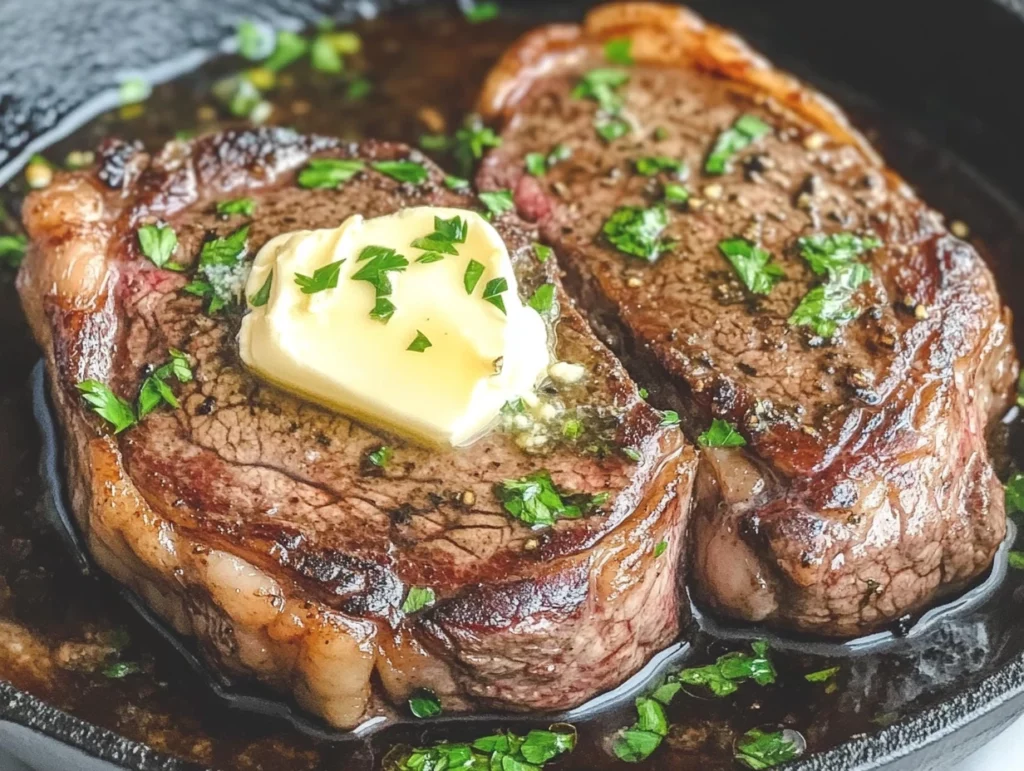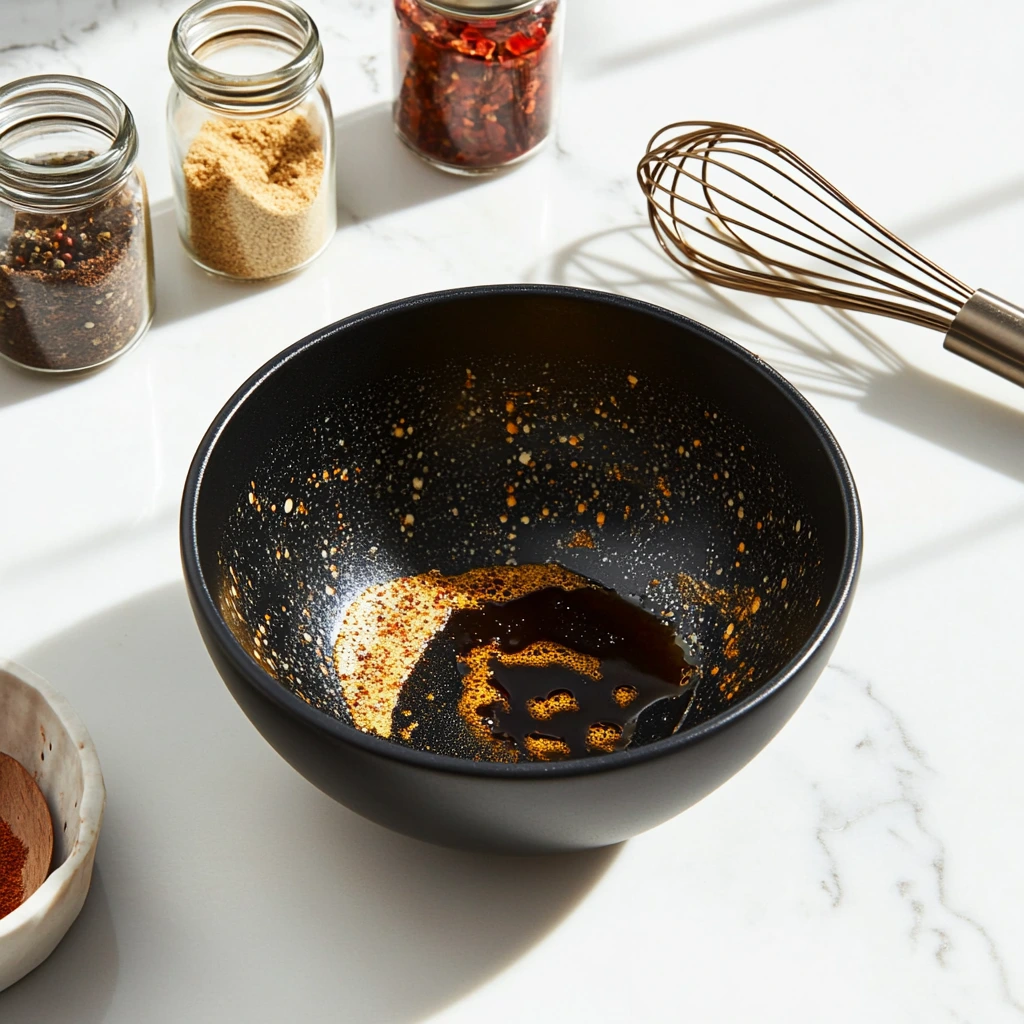There’s something almost magical about firing up the grill on a warm evening, the scent of smoke mingling with sizzling beef, and the promise of a perfectly charred crust giving way to a rosy, juicy interior. A good steak can turn any ordinary weeknight into a small celebration, and this Best Steak Marinade is my secret weapon for making ribeyes taste like they came straight from a high-end steakhouse. I still remember the first time I tried this marinade: I was hosting a last-minute backyard cookout, and panic set in when I realized I had only bland steaks and a floundering guest list. In a culinary hail-Mary, I whipped together this blend of soy sauce, lemon juice, Worcestershire, and herbs—threw my steaks in, and crossed my fingers. Twenty minutes later, my friends were raving, the grill was smokin’, and I learned firsthand that a killer marinade can truly save the day.
Over the years, I’ve tweaked this recipe to strike the perfect balance of salty umami, bright acidity, herbal warmth, and a whisper of heat. It’s straightforward enough for a busy weeknight but impressive enough for weekend gatherings. Best of all, it transforms simple ribeyes into something restaurant-quality, without any fancy equipment or hours of prep. So grab your gallon-sized bag, a whisk, and let’s get started—your future self (and everyone you feed) will thank you.
STEPS
Mix the Marinade
In a medium bowl, combine:⅓ cup soy sauce
⅓ cup fresh lemon juice
½ cup olive oil
¼ cup Worcestershire sauce
1 tablespoon minced garlic
1 teaspoon freshly ground black pepper
½ teaspoon kosher salt
1 teaspoon garlic powder
1 teaspoon onion powder
1 tablespoon Italian seasoning
⅛ teaspoon red pepper flakes
Whisk these ingredients together until they form a uniform, slightly viscous liquid. The lemon juice brightens the mix and helps tenderize the meat, while the soy and Worcestershire sauces layer on savory depth. I like to taste a tiny spoonful here—don’t worry, you won’t juice your mouth on raw garlic—but it’s a good way to adjust the salt or tang before everything hits the steaks.
Marinate the Steaks
Place four thick-cut ribeye steaks in a large resealable plastic bag or a shallow 9×13-inch baking dish. Pour the marinade over the steaks, making sure each piece is thoroughly coated. If you’re using a bag, press out excess air and seal it tightly; if you’re using a dish, cover it with plastic wrap.Tip: Turn the bag or gently flip the steaks halfway through the marinating time to redistribute the flavors. I’ve found that giving the meat an even soak makes all the difference in depth of flavor.
Refrigerate & Relax
Slide your marinating steaks into the fridge for at least two hours. This is where the magic happens: the acidity from the lemon juice and the enzymes in the soy sauce start to break down connective tissue, making the beef tender all the way through. If you have the time, aim for four hours—or even overnight for a real flavor blast. Just be careful: marinating too long (over 24 hours) can start to mush the meat fibers, especially on thinner cuts.Bring to Room Temperature
About 20–30 minutes before you plan to cook, pull the steaks out of the fridge. Letting them rest at room temperature ensures they’ll cook more evenly and develop a gorgeous sear instead of staying chilled in the center. Use this window to fire up the grill, clean the grates, and grab your meat thermometer—because nobody wants to undercook or overcook a masterpiece.
Grilling to Perfection & Pro Tips
Now that your steaks have soaked up all that savory goodness and warmed to room temperature, it’s time to transform them into glorious, charred masterpieces. High heat is your ally here—think of it as the finishing touch that locks in juices and builds that irresistible crust. Below are the detailed steps, plus insider tips to ensure every bite is tender, flavorful, and beautifully seared.
STEPS
Preheat the Grill
Aim for a grilling surface temperature between 450–500°F. If you’re using a gas grill, turn all burners to high and close the lid for 10–15 minutes to let it stabilize. For charcoal, bank the coals to one side and allow them to ash over until they glow bright red beneath a light layer of gray ash. Clean and oil the grates to prevent sticking—an easy way is to dip a folded paper towel in oil, hold it with tongs, and rub it over the bars.Season & Sear
Remove the steaks from the marinade, letting excess drip off—too much moisture will steam rather than sear. If you like, sprinkle a pinch of sea salt over each side just before grilling. Place the steaks directly over the hottest part of the grill, close the lid, and resist the urge to lift or poke them. Let them sear undisturbed for 3–4 minutes; this develops a deep, golden-brown crust packed with flavor.Flip & Finish the Sear
Using tongs, flip each steak to a fresh hot spot on the grill. Close the lid and let them sear for another 3–4 minutes. This flip-and-sear method creates those coveted crosshatch grill marks on both sides. If flare-ups occur, move the steaks to a slightly cooler zone until the flames subside, then return them to high heat.Check for Doneness
Insert an instant-read thermometer into the thickest part of each steak. Use the following internal temperatures as your guide:Rare: 125°F
Medium-Rare: 135°F
Medium: 145°F
If the steaks haven’t reached your target, flip them back over for 1–2 minutes per side, checking every minute or so to avoid overshooting. Keep in mind, carryover cooking during resting will raise the temperature by about 5°F.
Rest & Butter
Transfer the steaks to a cutting board and tent loosely with aluminum foil. Rest for 5 minutes—this crucial step allows the juices to redistribute rather than running out the moment you slice. Meanwhile, drop one pat of cold butter onto each steak. As the butter melts, it forms a glossy, rich finish that amplifies every mouthful.
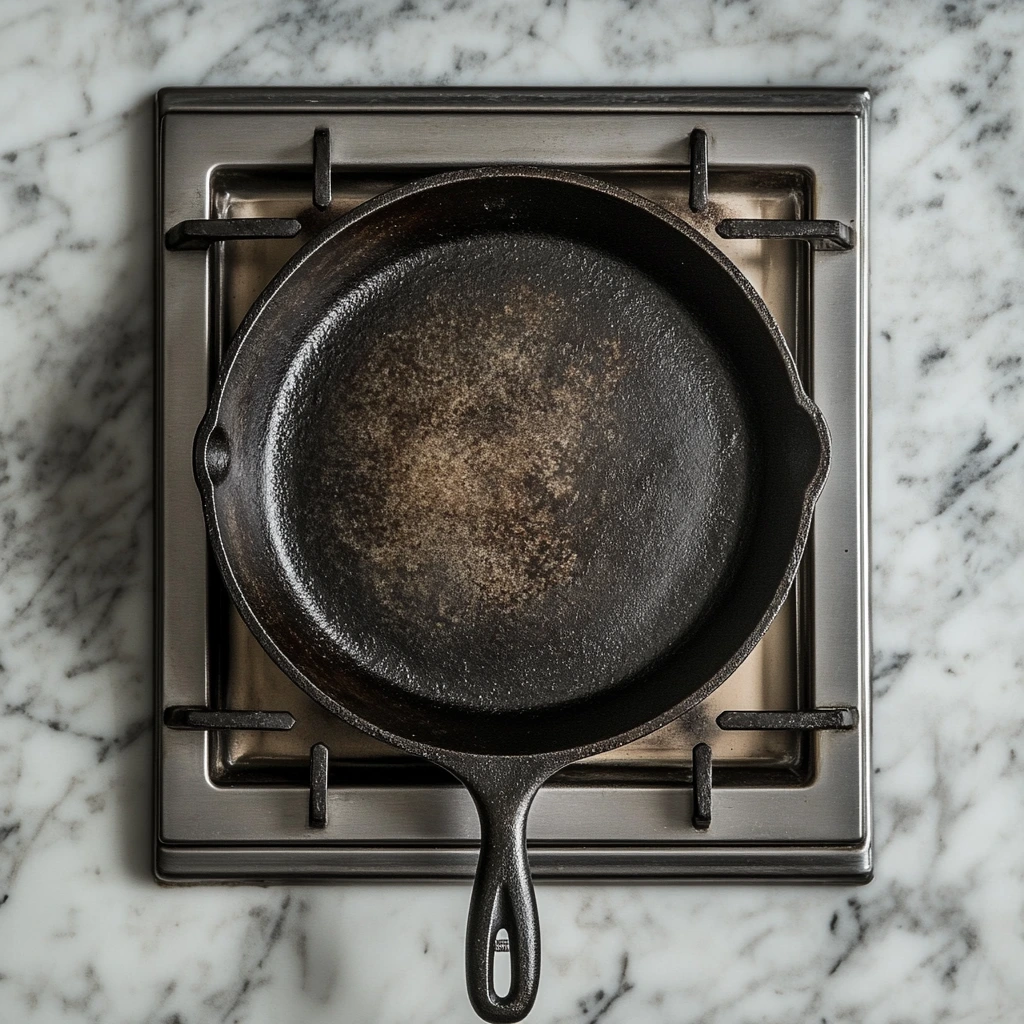
PRO TIPS & VARIATIONS
Compound Butter Upgrade: Mix 4 tablespoons softened butter with 1 minced garlic clove, 1 teaspoon chopped parsley, and a pinch of salt. Roll into a log, chill until firm, then slice into pats. Swap these for plain butter to add an herbed, garlicky punch.
Cast-Iron Alternative: No grill? Preheat a heavy cast-iron skillet over high heat until smoking. Add a tablespoon of oil with a high smoke point (like avocado), then follow the same sear–flip–sear routine, finishing in a 400°F oven for 3–5 minutes to reach desired doneness.
Flavor Tweaks: Swap lemon juice for balsamic vinegar to introduce a sweet tang, or stir in 1 teaspoon smoked paprika for an earthy twist. Adjust red pepper flakes to dial up or down the heat.
Marinade Reuse Note: Never reuse marinade that’s touched raw meat unless you boil it for at least 2 minutes to kill bacteria. If you want extra sauce, set aside ¼ cup of fresh marinade before adding the steaks.
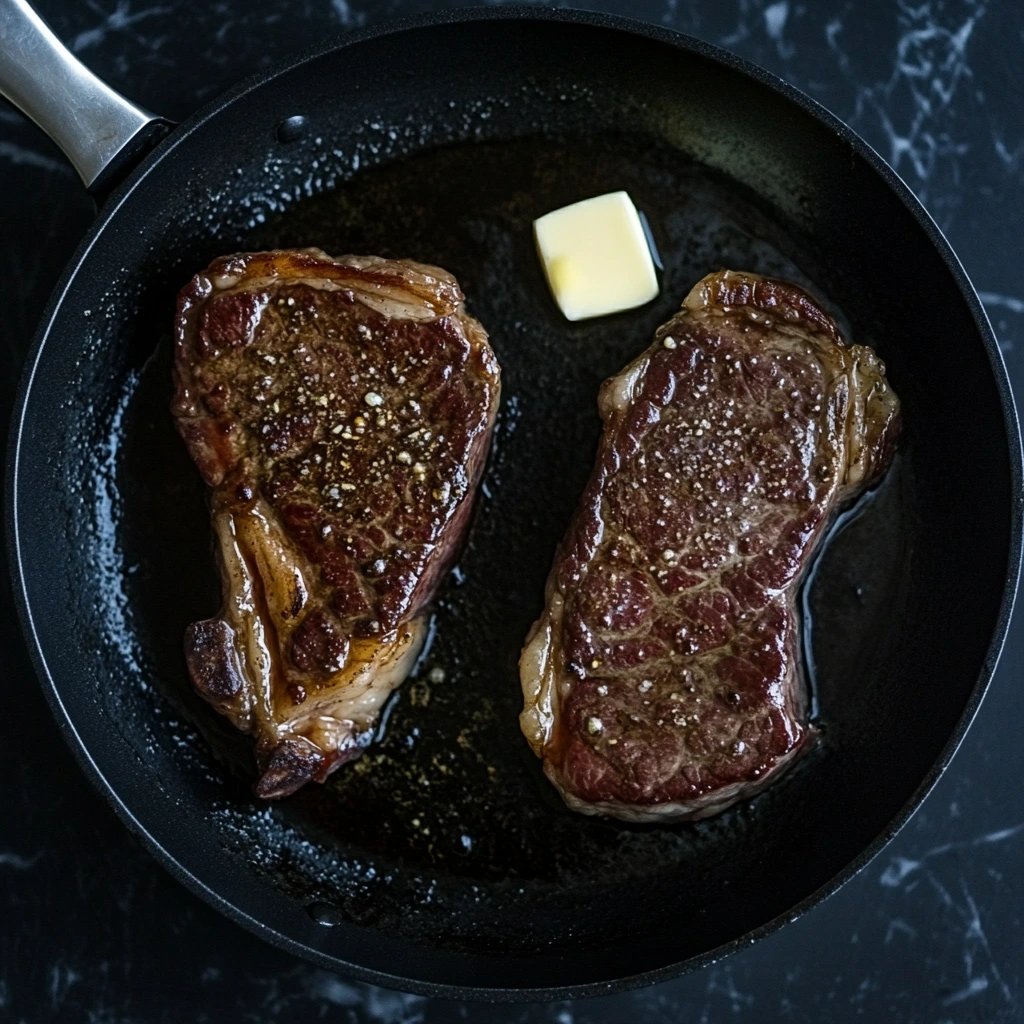
FAQ & Conclusion
Whether you’re a first-time griller or a seasoned pro, these FAQs cover the little details that can make a big difference in your steak game. Let’s address the questions I hear most often, then wrap up with some final encouragement to get out there and grill!
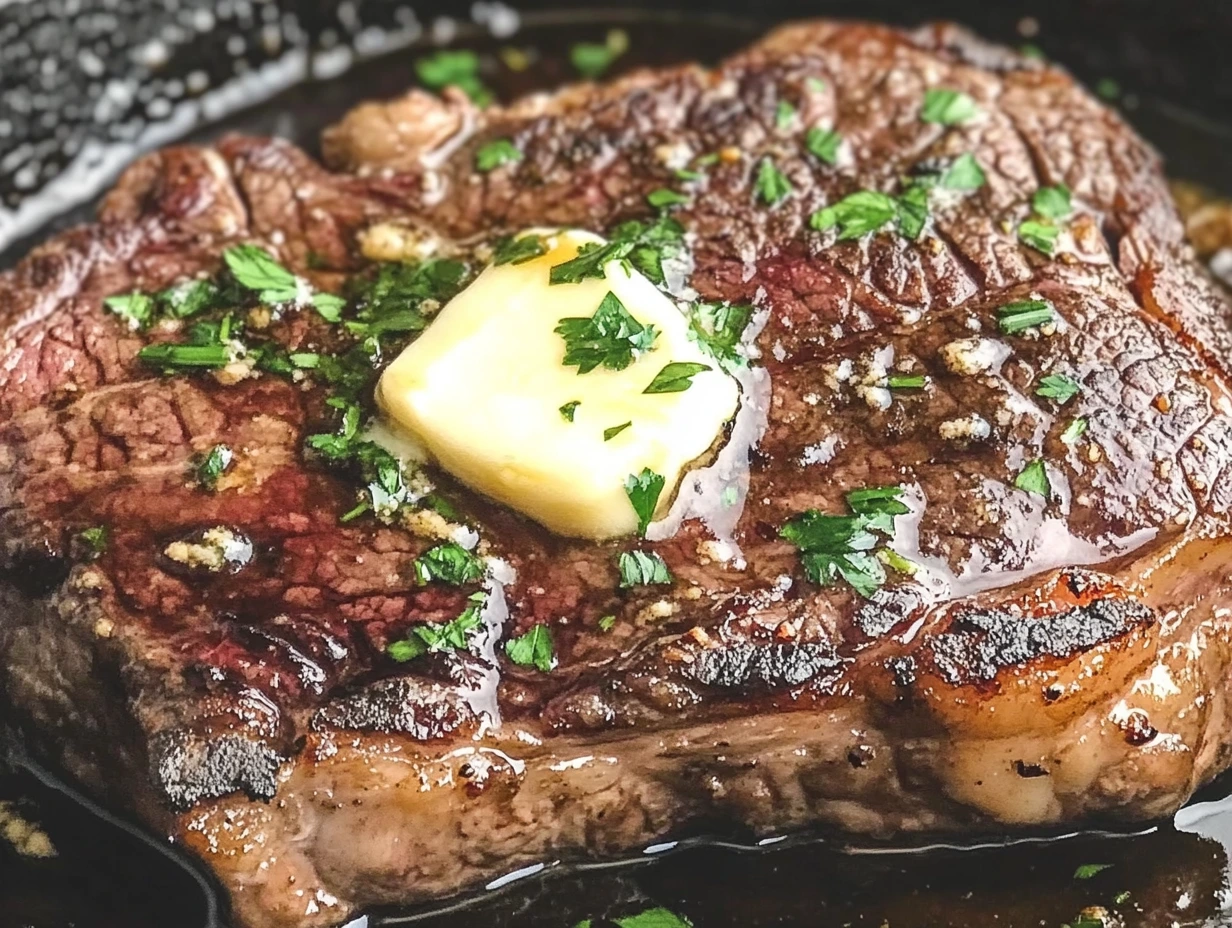
Q1: Can I use a different cut of steak with this marinade?
Absolutely. While ribeyes shine thanks to their marbling, you can adapt this marinade for New York strips, sirloins, flank steaks, or even skirt steak. Keep in mind that leaner cuts like flank or skirt benefit from shorter marinating times (2–4 hours) to avoid over-tenderizing, while thick-cut cuts can go up to overnight.
Q2: What if I don’t have an instant-read thermometer—how can I tell doneness?
The finger test is a handy workaround: touch your relaxed palm just below the base of your thumb—this is close to rare. Press the same spot with your index finger (slightly firmer) for medium-rare, middle finger for medium, and so on. It takes practice, but it’s a real confidence booster once you get the feel.
Q3: How long can I store leftover marinated steaks?
Raw, marinated steaks should be cooked or frozen within 24 hours. If you know you won’t cook them within that window, transfer to a freezer-safe bag and freeze for up to three months. Thaw overnight in the fridge before grilling.
Q4: Can I make the marinade ahead of time?
Yes! Whisk the liquids and seasonings together and store in a sealed container in the fridge for up to one week. Give it a good stir before pouring over your steaks. Just remember to reserve a small portion if you’d like to use it as a sauce later.
Q5: Why did my steaks stick to the grill?
Sticky steaks usually mean the grill wasn’t clean or hot enough. Always preheat until the grates are smoking hot, then oil them lightly. Don’t flip too early—wait until the crust releases itself naturally, about 3–4 minutes per side.
Q6: What side dishes pair well with these steaks?
Classic is always great: garlic mashed potatoes, grilled asparagus, or a crisp Caesar salad. For something a bit different, try charred corn off the cob with lime and chili powder, or a simple arugula–pear salad with shaved Parmesan.
Q7: How can I adjust the heat level?
If you love spice, increase the red pepper flakes to ¼ teaspoon or add a dash of cayenne. For a milder profile, omit them entirely. You can also stir smoked paprika into the marinade for gentle warmth without direct chili heat.
Conclusion
There you have it—your complete guide to turning humble ribeyes into a showstopping, restaurant-style meal right in your backyard. From the bright, tangy marinade that tenderizes and flavors the meat, to the high-heat sear that creates a crisp, caramelized crust, each step is designed to deliver maximum flavor with minimum fuss.
Now it’s your turn. Fire up the grill, let that marinade work its magic, and savor every juicy bite. Don’t forget to experiment with the compound butter or tweak the seasonings to suit your taste. Once you’ve perfected your approach, come back and let me know how it went—share your favorite side dishes, any tweaks you made, or that moment when you sliced into perfectly medium-rare perfection. I can’t wait to hear about your steak adventures!
Print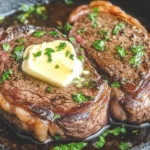
The Best Steak Marinade Recipe
- Author: Andrew Recipes
Description
A rich, savory marinade that infuses ribeye steaks with bright acidity, herbal warmth, and subtle heat. Soy sauce and Worcestershire sauce bring umami depth while lemon juice tenderizes and adds freshness. A blend of garlic, onion, Italian seasoning, and red pepper flakes rounds out the flavor profile, making every bite juicy and well-seasoned. Perfect for grilling to medium-rare or your preferred doneness, this marinade elevates simple ribeyes into a restaurant-quality experience.
Ingredients
⅓ cup soy sauce
⅓ cup lemon juice
½ cup olive oil
¼ cup Worcestershire sauce
1 tablespoon garlic, minced
1 teaspoon ground black pepper
½ teaspoon salt
1 teaspoon garlic powder
1 teaspoon onion powder
1 tablespoon Italian seasoning
⅛ teaspoon red pepper flakes
4 ribeye steaks
4 tablespoons cold butter, cut into pats
Parsley, finely chopped (for garnish)
Sea salt, to taste (optional)
Instructions
Combine soy sauce, lemon juice, olive oil, Worcestershire sauce, minced garlic, black pepper, salt, garlic powder, onion powder, Italian seasoning, and red pepper flakes in a small bowl to create a uniform marinade.
Place ribeye steaks in a gallon-sized resealable bag or a 9×13-inch baking dish and pour the marinade over them, ensuring each steak is fully coated. Seal the bag or cover the dish tightly with plastic wrap.
Refrigerate for two to four hours for a balanced flavor. For deeper penetration, marinate overnight, turning the steaks halfway through to redistribute the liquid.
Remove steaks from the refrigerator 20 to 30 minutes before cooking to allow them to come to room temperature, which promotes even cooking and juicier results.
Preheat the grill to high heat (450–500°F), open the dampers, and let it stabilize for 10 to 15 minutes with the lid closed.
Transfer steaks to the hottest part of the grill and add a light sprinkle of sea salt if desired. Close the lid and grill for three to four minutes without disturbance to develop a seared crust.
Flip each steak to a fresh hot spot on the grill to create distinct grill marks on the second side. Close the lid and grill for another three to four minutes.
Insert a meat thermometer into the thickest part of each steak and check the internal temperature. Continue grilling and checking every two minutes until you reach your preferred doneness—125°F for rare, 135°F for medium-rare, 145°F for medium.
Remove steaks from the grill and transfer to a cutting board. Tent loosely with foil and rest for five minutes to allow juices to redistribute.
Top each steak with a pat of cold butter and garnish with chopped parsley before serving.
Notes
Marinating time can range from two hours up to 24 hours; longer times intensify flavor but may over-tenderize very thin cuts.
Use a digital instant-read thermometer for the most accurate doneness; remember that steaks will rise by 5°F during resting.
If you don’t have a grill, sear steaks in a preheated cast-iron skillet over high heat, finishing in a 400°F oven for a similar effect.
Adjust red pepper flakes to taste or omit entirely for a milder profile.
For a compound butter variation, mix softened butter with minced garlic, parsley, and a pinch of salt, then chill and slice into pats.
